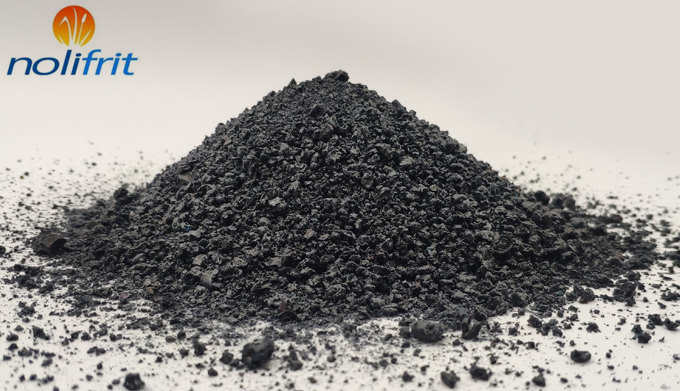The Firing Process of Enamel Ground Coat
In the firing process of the enamel ground coat, the surface of the iron blank and the enamel ground coat undergo a complex physical and chemical reaction. In an oxidizing atmosphere, an oxide film is formed on the surface of the iron billet, so that the molten enamel ground coat can infiltrate the iron billet. As the iron oxide is incorporated into the ground coat, a tightly bonded layer of the iron billet and the enamel layer is gradually formed. Experiments have proved that when enamel firing is performed when the oxidizing atmosphere is insufficient, even if there is a sufficient amount of high-quality adhesive, the adhesion layer is difficult or impossible to form.

The firing process of the enamel ground coat can be roughly divided into five stages. The physical and chemical reactions, changes in the state of the enamel and the characteristics of each stage are as follows:
In the first stage, the temperature is ~150°C. The main reaction is to remove the adsorbed water in the powder layer. A large amount of the adsorbed water in the powder layer evaporates, and some abrasives in the enamel frit begin to decompose.
In the second stage 150~400°C, the main reaction is the removal of structural water, decomposition of organic matter, oxidation reaction on the surface of the iron billet, the removal of structural water in the clay, the appearance of micro cracks in the powder layer, and the oxidation of the iron billet to form iron oxide. The termination feature is the appearance of micro cracks in the powder layer and the start of sintering.
In the third stage, 400~600°C, the main reaction is powder layer sintering. The iron billet and the enamel ground coat undergo oxidation-reduction reaction. The structural water continues to be removed. The porcelain layer is completely sintered and begins to soften. Part of the gas passage is closed, and the termination feature is close adhesion. The agent and the iron billet begin to undergo oxidation-reduction reaction, but the adhesion has not yet formed.
In the fourth stage, 600°C~sintering temperature, the main reaction is the formation of the adhesion layer, the powder layer is completely melted, the adhesion agent is replaced and deposited on the surface of the iron billet, and electrochemically corroded, the iron oxide is dissolved in the ground coat, the iron billet and the bottom The enamel penetrates each other, and the dense layer begins to produce dendrites. The termination feature is that the porcelain surface starts to glow, there are still small holes, and the adhesion layer begins to form.
The fifth stage lasts for a period of time after reaching the firing temperature. The main reaction is to gradually close the small holes and achieve good adhesion. This stage is the key to the quality of the product. The enamel ground coat melts and has a certain fluidity, and the residual gas further Elimination, the oxidation-reduction reaction between the adhesive in the ground coat and the iron continues, the dissolution of iron oxide, the interpenetration of the enamel ground coat and the iron blank accelerates, the dense intermediate layer is thickened, the small holes are closed, and the firing is completed. The firing conditions have been met. If it is still not out of the furnace, the ground coat will be overfired, and the dissolution of excessive iron oxide will affect the adhesion.